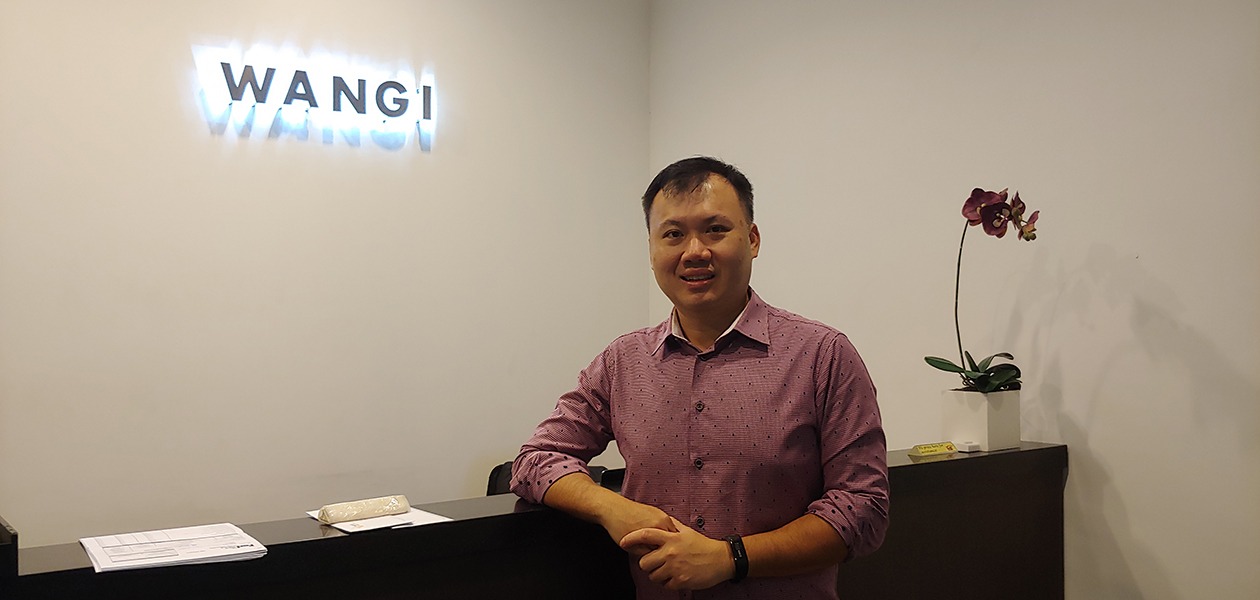The clear benefits of open innovation
Collaborating with research institutions has helped precision optics company Wangi Industrial to deepen their competitive advance, says Vice President Chew Ker Yee.
You might not realise it, but you probably interact with products from Wangi Industial every day. Everything from smartphone screens to fingerprint scanners at airports make use of their special glass and coatings, which are also used in precision optics for medical imaging. From a local printing business set up in 1968, Wangi has since grown into a high technology manufacturer serving clients across the globe.
An openness to innovation has been key to the company’s success over the last five decades, says Chew Ker Yee, Vice President of business operations at Wangi Industrial. Chew has spent the past 18 years transforming the family business, and in 2019 set up Winovus, a start-up focused on micro- and nano-scale substrates that can be used in flexible screens and genomics.
In this interview, Chew shares his perspective on open innovation and steps companies can take to make open innovation part of their culture.
1. What is the core competency/technology of your company?
We use advanced manufacturing to produce micro- and nano-scale patterned substrates. Our core competencies include injection moulding, nanoimprinting, mould-insert making, thin-film optical coating and glass processing.
2. Was there a turning point in Wangi’s history that convinced you that open innovation was the right way to grow?
We have always embodied a spirit of open innovation. Over the past 15 years, we have explored how innovation can maximise the productivity of our research and development (R&D)—we believe that there are four ways to achieve this:
One approach is to set up your own R&D team, though it can be expensive and challenging. Alternatively, you can outsource the research to external parties, such as research institutions, which may prove to be less costly due to shared resources. A third approach is to simply acquire the developed product, either through acquisitions or by purchasing it off-the-shelf, eliminating any technical risk of development.
The last approach is what I think open innovation is about: a combination of the other three approaches. The idea behind this approach is to first share your problem statements and then to search for the best solution. To successfully manage an open innovation approach, a good intellectual property (IP) strategy, knowledge of your core competencies and a clear technological roadmap are paramount.
3. How has open innovation contributed to the building up of your competitive advantage?
As a manufacturer, to create a competitive advantage is to create a technological lead. Such winning solutions can only be developed by cultivating an ecosystem that extends beyond our organisation, connecting and cross-fertilising existing ideas.
In 2013, we worked with the Agency for Science, Technology and Research’s (A*STAR) Institute of Materials Research and Engineering (IMRE) to co-develop a nanoimprinting technology. Prior to this, Wangi Industrial had no knowledge on the subject, whereas IMRE had conducted research on the topic for more than a decade. It was only after visiting IMRE did we believe that nanoimprinting could disrupt our optical coating technology. This exchange prompted us to enter into an agreement with IMRE to develop direct nanoimprinting technology on glass. The collaboration resulted in the release of two IPs within two years.
Course correction, adaptation, leadership and team management are key ingredients for the success of open innovation, so that we can build an R&D ecosystem capable of generating tremendous economic value for all parties.
4. How do you encourage a culture of open innovation in your company?
As Thomas Edison once said, “I have not failed. I’ve just found 10,000 ways that won’t work.” We cannot learn which product or idea will work without being willing to also discover what won’t work. That in turn involves an environment that tolerates and manages failure, and a perseverance for starting all over again.
We think that failure, perseverance and flexibility are the foundations of innovation. Open innovation, on the other hand, also requires a collaborative mindset that is fuelled by trust, accountability and good communication between teams.
To encourage and build a culture of open innovation, we put in a lot of effort into our recruitment, training and developmental process. We recruit individuals that show flexibility and ownership for their mistakes. We also believe that emotional intelligence and leadership can be trained. Thus, apart from technical knowledge, our training program focuses on both collaborative and problem-solving skills.
Finally, to create a blame-free culture, we organise bi-monthly meetings to share our mistakes and discuss areas for improvement. By inculcating a culture of ownership, an environment that fosters open innovation can be built.

